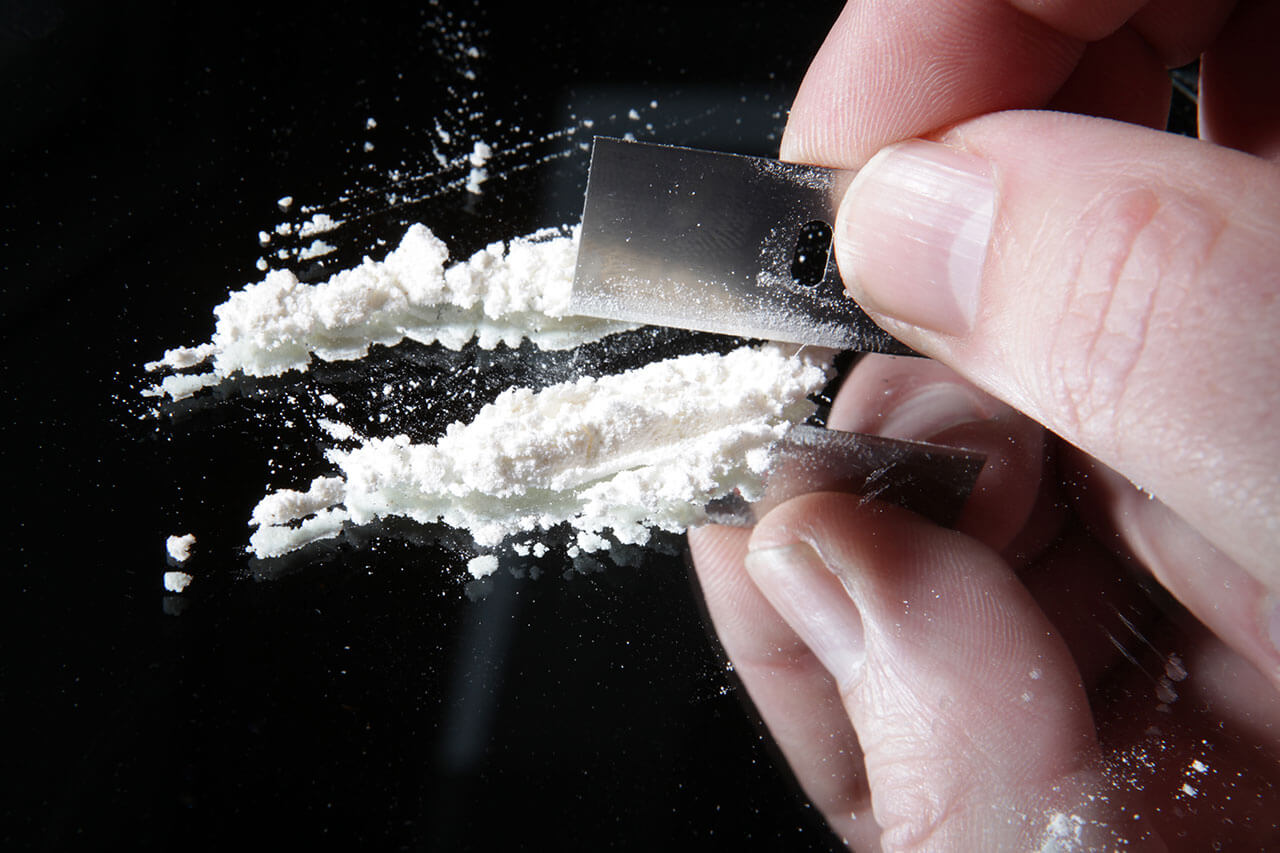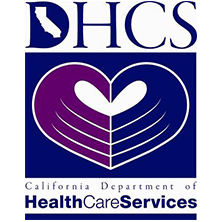SUBSTANCE ABUSE
Cocaine Abuse
Cocaine abuse can affect people of all ages. According to the National Institute on Drug Abuse (NIDA), statistics show that about 15% of the U.S. population aged 12 and older has used cocaine during their lifetimes, with 0.7% of people aged 12 to 17 having used during their lives, 12% of those 18 to 25 using at some point, and 17% of those 26 and older with a lifetime history of use.1
Cocaine addiction can develop among those who use the drug, and the Substance Abuse and Mental Health Services Administration (SAMHSA) reports that approximately 900,000 American adults have a cocaine use disorder.2 Therapy and other supports are known to help with recovery from cocaine use disorder.

What is Cocaine, and Why is it Addictive?
Experts report that cocaine is a highly addictive substance belonging to the stimulant class of drugs. Found in the form of a white powder, it comes from the leaves of the South American coca plant. People typically use cocaine by snorting it or by dissolving it in liquid and injecting it into their veins. Some people make cocaine into a rock-like form called crack cocaine and smoke it in a pipe.
As NIDA has reported, cocaine is addictive because of the effect that it has on the human brain.3 When people use cocaine, it increases levels of a brain chemical called dopamine, which is responsible for feelings of pleasure and happiness. When dopamine levels increase, a person feels euphoric, making cocaine use highly rewarding. Over time as the body becomes acclimated to the presence of cocaine and increased dopamine levels, a person will need to take more and more of the drug to achieve the same pleasurable effect. This process eventually results in cocaine tolerance and leads to addiction, with the potential for a person to experience withdrawal when cocaine use is reduced or stopped.
Slang Names for Cocaine
Cocaine Slang:
Blow
Coke
Rock
Snow
Snow White
Flake
Charlie
Sugar
Toot
Happy Trail
Usage Slang:
Chronic: Refers to marijuana that is combined with cocaine.
Dusting: Users who sprinkle cocaine on cigarettes or other drugs that are smoked.
Speedballing: The act of using heroin and cocaine together.
Snowcapping: Describes the process of sprinkling cocaine on top of marijuana when smoking it out of a bong.
Quantity Slang:
Additional slang terms are used to describe specific quantities of cocaine. For instance, cocaine users and dealers may refer to a small quantity of cocaine that provides a fast high as a “bump” of the drug, and a “line” describes a quantity of powder cocaine that is placed in a straight line for snorting. In addition, a “brick” describes a kilogram of cocaine, whereas an “eight ball” is an eighth of an ounce of the drug.
COCAINE ADDICTION SYMPTOMS
Medical professionals will typically refer to cocaine addiction as a cocaine use disorder. According to diagnostic criteria, cocaine use disorder symptoms include strong cravings for the drug and an inability to stop using cocaine or to reduce use of the drug.
In addition, a person who has developed a cocaine addiction will often have difficulty with daily life tasks (such as keeping a job or maintaining a home). It’s common for people to give up activities they once enjoyed, such as playing sports or engaging in hobbies as a result of the addiction.5
Other symptoms of a cocaine use disorder include continuing to use even when it causes danger, such as driving a vehicle while under the influence. An addiction to cocaine may also result in continued substance abuse despite significant health issues that result from the drug use.
TOLERANCE AND WITHDRAWAL
With ongoing use and addiction, tolerance occurs, meaning more of the drug must be used in order to achieve the same result. Withdrawal, which involves uncomfortable symptoms that occur when cocaine use is reduced or discontinued, is also a part of cocaine addiction.
DIAGNOSING COCAINE USE DISORDER
While symptoms of cocaine use disorder may seem apparent, a qualified professional such as a licensed social worker, a counselor, psychiatrist, or a physician specializing in addiction medicine can complete an assessment to determine if a person meets diagnostic criteria for such a disorder.
It is also important to note that symptoms may appear different for each person; two people who both have a cocaine use disorder may display entirely different symptoms.
It is also possible that some people who have a less severe condition will only display a few symptoms, whereas those with a serious addiction may display almost all of the symptoms listed in the diagnostic criteria for cocaine use disorder.
Effects of Cocaine Use
In addition to the symptoms of addiction, there are acute symptoms that occur immediately following cocaine use. Acute symptoms include:
The intense euphoria and “high” associated with cocaine use typically wears off quickly, within half of an hour when cocaine is snorted and in as few as five to 10 minutes with smoking. However, the acute side effects of cocaine use can continue for several hours.
Consequences of Ongoing Cocaine Use
With long-term cocaine use, people can become addicted to the drug and experience a variety of negative health effects.
Heart Impacts
Cocaine is a stimulant drug that places significant stress on the cardiovascular system, so heart disease and heart attacks are potential consequences. People who become addicted to cocaine are also at increased risk of stroke because cocaine constricts blood vessels and elevates blood pressure levels. Chronic cocaine users may also suffer from headaches, seizures, and convulsions.
Respiratory Issues
Additional health-related consequences of cocaine abuse include respiratory issues such as breathing difficulties and lung damage. People who snort cocaine may suffer from runny noses and breathing difficulties due to damage to the nasal septum.
Additional Physical Health Issues
NIDA has reported additional health consequences associated with long-term cocaine use, including:
•Pneumonia
•Asthma
•Cough
•Collapsed veins
•Increased risk of HIV and hepatitis
•Difficulty swallowing
Because cocaine reduces appetite, it can also result in weight loss and malnutrition. Cocaine addiction can also affect sexual and reproductive health, causing sexual dysfunction and infertility. Cocaine can cause tremors, and over time, it is associated with movement disorders including symptoms of Parkinson’s disease.
Mental Health Effects
In addition to these detrimental effects to physical health, cocaine use can harm mental health functioning. People who abuse cocaine on an ongoing basis may demonstrate paranoid behavior, agitation, and changes in mood. They may also begin to hallucinate, which can involve hearing or feeling things that aren’t actually present. For example, some chronic cocaine users feel that they have bugs crawling on their skin and they may pick at it aggressively, creating scratches and sores.
Misconceptions Surrounding
Cocaine Addiction
While much is known about the dangers of cocaine addiction, there are still some misconceptions regarding this stimulant drug.
Cocaine is Safe
One such misconception is that cocaine is safe, as some people may use cocaine casually in social settings where alcohol is consumed. Unfortunately, even casual cocaine use can be dangerous, with NIDA reporting that just one use of cocaine can be fatal, often as a result of a seizure or cardiac arrest.6 Cocaine is known to place stress on the heart, and using it just once can have devastating consequences for those who have an existing heart condition or who have certain cardiovascular risk factors such as obesity or high cholesterol.
Everyone is Using Cocaine
Similarly, because cocaine use may occur within the party scene, some people may mistakenly assume that everyone is using cocaine. This is simply not the case, as statistics show that less than one percent of the population aged 12 and above have used cocaine within the past month. Among those aged 18-25 (the range typically associated with college partying and nightlife), just under two percent of the population has used cocaine in the previous month. Crack cocaine use is even less common, with just 0.2% of the population reporting they have used it in the past month.
Cocaine Doesn’t Have Withdrawal
A third misconception surrounding cocaine addiction is that it does not result in withdrawal. While cocaine addiction typically doesn’t cause the same painful withdrawal often associated with opiates, it can produce strong psychological withdrawal symptoms. Cocaine use is highly rewarding because of its ability to increase levels of the pleasure-inducing chemical dopamine, so when cocaine use is stopped, negative mental health effects are typically experienced. These psychological withdrawal symptoms may not appear as severe as physical symptoms like pain, diarrhea, and vomiting that occur when someone discontinues heroin use, but the anxiety, depression, and sleep disturbances associated with cocaine withdrawal can be equally unpleasant.
Cocaine Withdrawal
Cocaine addiction is associated with a number of adverse health effects, and people may experience additional unpleasant effects when withdrawing from cocaine.
Common withdrawal symptoms include:
•Depression and anxiety
•Extreme cocaine cravings
•Severe fatigue
•Agitation
There are other cocaine withdrawal symptoms such as sleep disturbances, frightening dreams, thinking difficulties, and increased appetite. Some people may find that they gain weight when withdrawing from cocaine.
Treatment for Cocaine Addiction
Cocaine is highly addictive, and abusing it can result in significant physical and mental health consequences. Fortunately, treatment is available for cocaine addiction.
Therapy
Experts report that cocaine addiction treatment often involves psychological methods such as therapy. Two forms of therapy commonly used to treat cocaine addiction are cognitive behavioral therapy and contingency management programs. Sometimes these two therapeutic methods are used together. In cognitive behavioral therapy, people learn to challenge irrational thoughts and develop healthier ways of thinking. With contingency management programs, people receive incentives (such as money) when they are able to remain abstinent from cocaine.
Supportive Environments and Groups
According to NIDA, cocaine addiction treatment can also involve participation in groups such as 12-step meetings. Some people in recovery from cocaine addiction may reside in sober living communities with others who are also recovering. Regardless of the form of treatment, cocaine addiction services can occur on either an inpatient or outpatient basis. People with more severe addictions may complete inpatient treatment in hospitals or residential rehabilitation facilities, whereas those who have a less severe addiction and access to support and resources within the community can complete outpatient services. Intensive outpatient services, in which a person spends more time in treatment each week but still returns home at night, are a bridge between inpatient treatment and standard outpatient programs.
Medications
Medications may sometimes be used alongside other treatment methods for cocaine addiction, although NIDA reports that there are no pharmaceutical drugs currently approved specifically to treat cocaine use disorders. Regardless, some medications such as disulfiram prescribed to treat alcohol abuse, and modanifil, a narcolepsy medication, may be beneficial to those in recovery from cocaine addiction. The obesity drug lorcaserin may also be helpful in cases of cocaine abuse, and some people may benefit from taking buprenorphine, which is commonly used in cases of opiate addiction.
Resources
- https://www.drugabuse.gov/drugs-abuse/cocaine
- https://www.samhsa.gov/data/sites/default/files/report_2790/ShortReport-2790.html
- https://www.drugabuse.gov/publications/drugfacts/cocaine
- http://www.cesar.umd.edu/cesar/drugs/cocaine.asp
- https://www.psychiatry.org/patients-families/addiction/what-is-addiction
- https://www.drugabuse.gov/publications/research-reports/cocaine/what-are-short-term-effects-cocaine-use
SAFE HARBOR TREATMENT CENTER
Finding Help
Those who are struggling with cocaine addiction can receive the treatment they need by contacting an addiction treatment professional who can determine what counseling services and medications are necessary for recovery. If you are finding that cocaine is having a negative impact on your life and you are unable to stop using, reaching out for help is the first step toward recovery.




